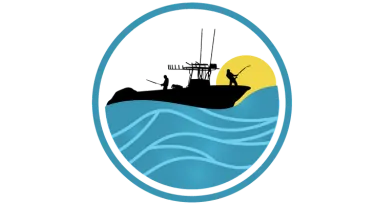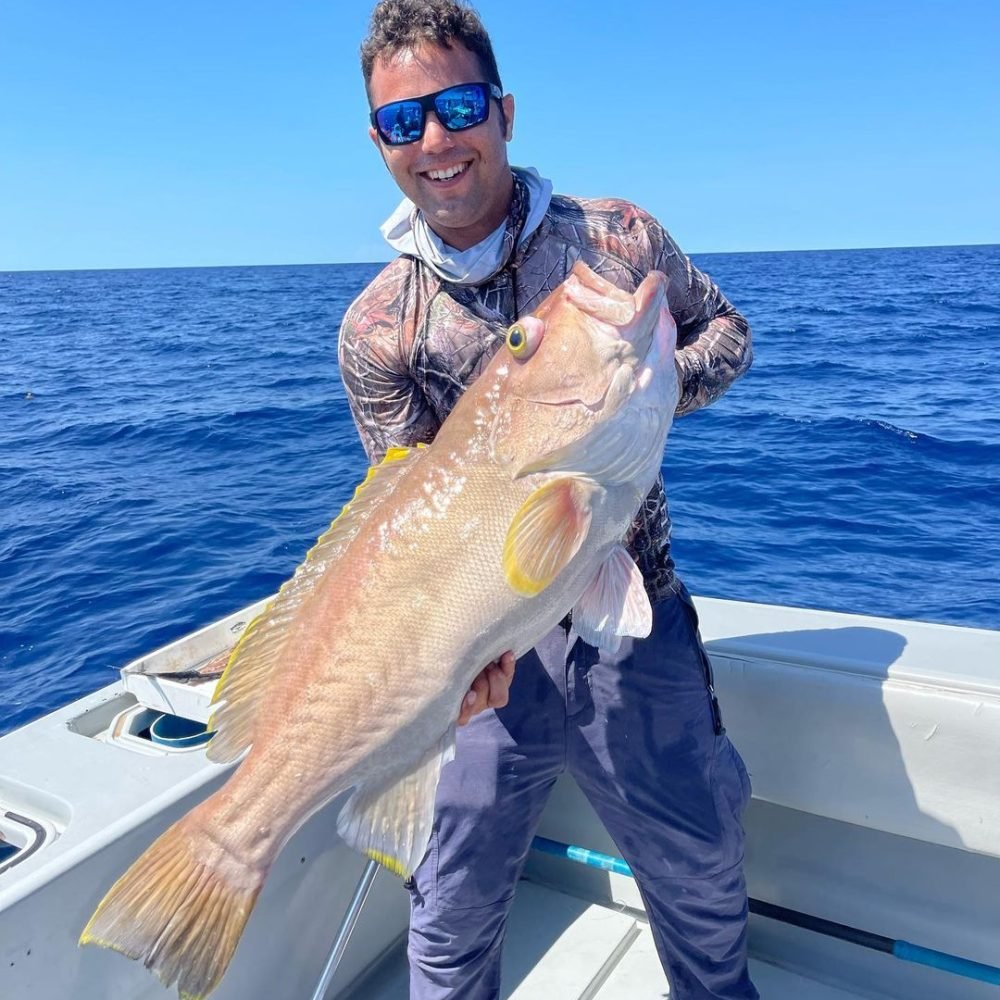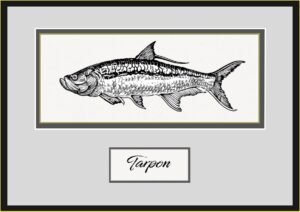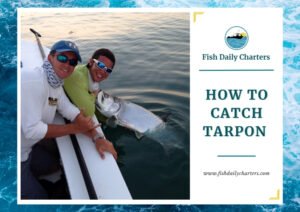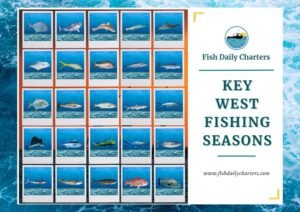Fishing near the shoreline, known as inshore fishing, happens within a few miles of the coast. This popular type of fishing is enjoyed from the beach, a pier, or a boat. It involves fishing in fairly shallow waters, often less than 30 meters deep and close to land. Inshore fishing includes many techniques and environments. These range from backwater estuaries to areas near jetties and beaches.
Similar to nearshore and inland fishing, this type of fishing shares similarities and appeals to a wide range of fish species. Inshore fishing offers different fishing styles, such as casting, drifting, and bottom fishing. When you head into inshore waters, you’ll target species like snook, tarpon, bonefish, redfish, and speckled sea trout. These fish are found in the shallows during their migration and all year round.
When it comes to fishing, inshore adventures are more demanding than offshore fishing trips. The presence of underwater plants and rocks poses unique challenges. Still, it’s an excellent choice for people who get seasick. It offers a constant view of the horizon. Inshore boats are designed to move through shallower waters. They are generally smaller than offshore boats. You are able to explore exciting inshore trips like bay fishing, wading, jetty fishing, and flats fishing.

Is Inshore Fishing Saltwater?
Yes, inshore fishing is usually done in saltwater. It takes place in coastal areas like bays, estuaries, and nearshore waters where saltwater is dominant. Tides influence inshore fishing. Inshore areas often include salt marshes, mangroves, and flats. Inshore fishing focuses on catching saltwater species. But, it also includes brackish water, where saltwater and freshwater mix.

Where Can You Inshore Fish?
Inshore fishing is possible in many coastal areas with shallow waters near the shore. Some well-known spots for inshore fishing are:
- Bays and Estuaries: These protected spots are perfect for fishing close to the shore because of their peaceful waters and thriving fish communities. You’ll frequently find species such as redfish, speckled trout, and flounder in these areas.
- Beaches and Surf Zones: Species like snook, pompano, and striped bass are caught by fishing from the shore or wading into the surf.
- Mangroves and Salt Marshes: These surroundings offer perfect habitats for fish such as snook, tarpon, and redfish, providing an exciting fishing experience among special coastal flora.
- Flats: Anglers enjoy the thrill of sight fishing for bonefish, permit, and tarpon in shallow, sandy, or grassy areas.
- Jetties and Piers: Structures that reach out into the water create a perfect home for a variety of fish species and also make it convenient for anglers to reach deeper waters without requiring a boat.
- Backwaters and Creeks: In these narrow waterways, you’ll come across species like snook, redfish, and tarpon, allowing a quiet and secluded fishing trip.
Inshore fishing spots are usually easy to reach and offer a wide many fishing options. This is why they are loved by inshore anglers of every experience level.

What Species of Fish Can You Catch Inshore?
Inshore fishing provides anglers with a fantastic opportunity to target a range of fish species. The types of fish you may come across change depending on where you are and the time of year. Some popular inshore species include:
- Snook: Popular for their strong fighting ability and found around mangroves, docks, and sandy beaches.
- Redfish (Red Drum): With a distinct black spot located near their tail, these fish are commonly seen in estuaries and bays.
- Speckled Trout (Spotted Sea Trout): These fish are commonly found in grassy flats and estuaries, and they are well-known for their fierce strikes.
- Tarpon: Famously known as the “Silver King,” these fish are prized for their size and acrobatic abilities, found in coastal waters and river mouths.
- Flounder: Sandy or muddy areas are where you’ll spot these bottom-dwelling fish with flat bodies and impressive camouflaging abilities.
- Bonefish: Inshore fly fishing enthusiasts often target this popular species that live in shallow flats.
- Permit: If you’re exploring shallow flats and sandy bottoms, you might just come across these remarkable fish, which are well-known for their breathtaking runs.
- Black Drum: Just like redfish, spotted in estuaries and near structures such as docks and bridges.
- Pompano: Little, quick fish that are snagged in surf zones and sandy beaches, appreciated for their flavorful meat.
When it comes to inshore fishing, the possibilities are endless! Anglers of any skill level enjoy the excitement and satisfaction of encountering different species of fish. These examples are just a taste of the incredible diversity you’ll find while casting your line.

What are popular inshore fishing techniques?
Inshore fishing requires different techniques. They depend on the environment and the type of fish you’re targeting. Here are some of the most popular inshore fishing techniques:
- Casting: A popular fishing method is to cast a lure or baited hook into the water using a fishing rod and reel.
- Drifting: Going with the flow of the current or wind on the boat while presenting baits or lures to fish is an efficient way to cover a bigger area.
- Bottom Fishing: By using weighted rigs, you are able to target species that dwell near the ocean floor. Make sure the bait is always close to the bottom where fish can easily access it.
- Jigging: Attracting fish by moving a weighted bait up and down in the water.
- Fly Fishing: Anglers who want to target species in shallow flats swear by a specialized fly rod, reel, and line. These lightweight artificial flies are a must-have for any fishing enthusiast.
- Live Bait Fishing: When it comes to attracting fish, many anglers opt for live bait such as shrimp, minnows, or crabs, using different rigs to maximize their chances of catching a prized catch.
- Sight Fishing: In clear water environments, it’s a common practice to locate fish in shallow waters visually and then cast your line towards them.
- Trolling: Using lures or baited hooks while trolling behind a moving boat helps you explore a wider area.
Anglers can adapt these techniques. They can match inshore environments and target a variety of species. This guarantees an exciting and diverse fishing experience.

What Equipment do You Need for Inshore Fishing?
When it comes to inshore fishing, you’ll need gear that’s made to tackle the challenges of shallow coastal waters and the fish that inhabit them. Here’s a list of essential equipment:
- Rod and Reel: A 6–7 foot medium-heavy spinning rod with a 2500 to 4000 size spinning reel.
- Line: 10-20 lb braided line with a 20-30 lb fluorocarbon leader.
- Terminal Tackle: Circle hooks, J-hooks, treble hooks, sinkers, weights, and swivels.
- Lures and Baits: Soft plastics, jig heads, spoons, topwater plugs, and live bait like shrimp and minnows.
- Tools and Accessories: Pliers, landing net, tackle box, and fishing license.
- Optional Equipment: Waders, fishing kayak or small boat, polarized sunglasses, and sun protection.
Gear up for an incredible inshore fishing adventure by gathering these essential items. With these items, you’ll be fully ready for a successful and fun time on the water.

What Kind of Boat is Best for Inshore Fishing?
If you’re looking for a boat for inshore fishing, it’s crucial to consider the specific conditions and environments you’ll be facing. Ideal boats for inshore fishing include:
- Flats Boats: Designed for shallow water fishing with a flat bottom and shallow draft.
- Bay Boats: Versatile with a slightly deeper draft than flats boats, good for bays and nearshore waters.
- Skiffs: Small, simple, lightweight boats for shallow flats and creeks.
- Center Console Boats: Larger, more adaptable boats with an open deck layout.
- Jon Boats: Flat-bottomed aluminum boats perfect for calm, shallow waters.
- Kayaks and Canoes: Small, manually powered vessels for stealthy and eco-friendly fishing.
Each boat type has its own advantages. These advantages are tied to the fishing environment and personal preferences. They make each type suitable for different inshore fishing scenarios.

When is the optimal time for inshore fishing?
The optimal time for inshore fishing depends on different factors, including tides, seasons, and weather conditions:
- Tides: Incoming, outgoing, high, and low tides each offer different advantages for targeting fish.
- Seasons: Spring and fall are some of the best times, with warmer water temperatures and active fish.
- Weather Conditions: Overcast days, calm winds, and stable weather patterns generally provide better fishing conditions.
If you take these factors into consideration and stay updated on local fishing reports. You’ll boost your chances of a successful inshore fishing trip.

What are the benefits of Inshore fishing?
There are plenty of advantages to enjoy when it comes to inshore fishing, including:
- Accessibility: Closeness to shore and various fishing locations make it easily accessible.
- Cost-Effectiveness: Lower costs and simpler gear compared to offshore fishing.
- Abundance of Fish: Diverse species and year-round fishing opportunities.
- Easier Conditions: Calmer waters are less physically demanding than offshore fishing.
- Environmental Interaction: Scenic locations and wildlife observation.
- Learning and Skill Development: Beginner-friendly with different techniques to master.
- Social Aspect: Family-friendly and great for group activities.
Considering everything, inshore fishing is an appealing choice. It’s for those who want a gratifying and enjoyable fishing trip.
What is the difference between offshore fishing and inshore fishing?
Inshore fishing happens in the shallower waters near the shore. There, you will catch fish like redfish, snook, and trout. It’s all about using smaller boats, fishing from the shore or piers, or even wading into the water. On the other hand, offshore fishing takes you miles away from the shore into deeper waters. Here, you’ll target bigger species, like tuna and marlin. This requires larger boats and better gear.
When comparing the difference between inshore and offshore fishing, it’s important to consider the types of fish targeted. Also, the needed equipment and the overall fishing experience differ. Inshore fishing is generally more accessible and perfect for beginners. Offshore fishing demands more prep and skill. This is because of the tough conditions and bigger catches.
What is the difference between Nearshore Fishing and inshore fishing?
Inshore fishing is all about casting your line just a few miles from the shore in the shallower waters. Within 9 miles of the coast, you’ll have the opportunity to catch species like mackerel and snapper. Boat trips to nearshore fishing spots take slightly longer than inshore trips, providing a distinct experience for anglers deciding between inshore vs nearshore fishing. Just make sure you have a sturdy boat that handles the waves and currents.
What type of fish are found inshore in Key West?
Inshore fishing in Key West, Florida, offers a blend of fish species, including:
- Snook: Found around mangroves and docks.
- Redfish: Common in shallow flats, known by their black spot.
- Tarpon: Prized for their size and acrobatic leaps.
- Bonefish and Permit: Sought-after in shallow flats.
- Mangrove Snapper, Spotted Sea Trout, Jack Crevalle, Black Drum, and Sheepshead: Found in different inshore habitats.
How to Book an Inshore Fishing Charter?
Booking an inshore fishing charter with Fish Daily Charters ensures a successful fishing trip. You get an expert captain and all the necessary gear. Ready to experience the excitement of inshore fishing in Key West, Florida? Reserve your adventure with Fish Daily Charters today. Let us give you an unforgettable fishing experience.
